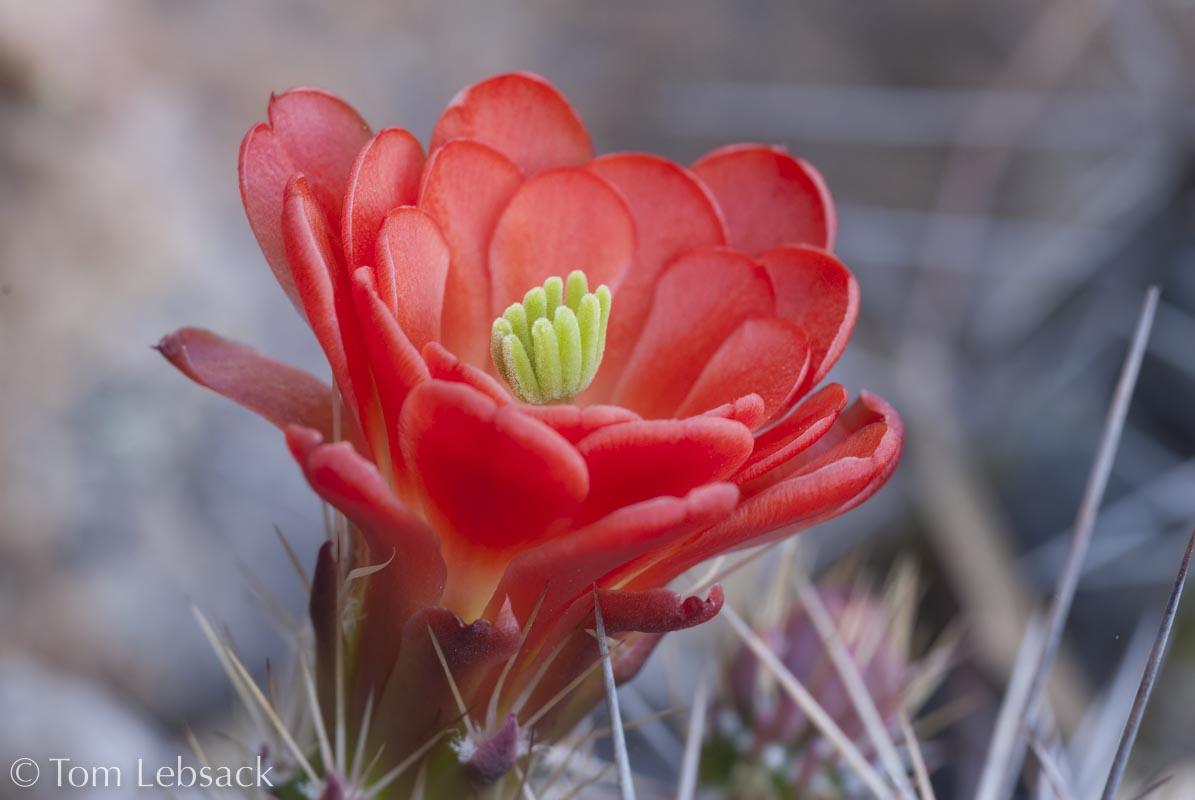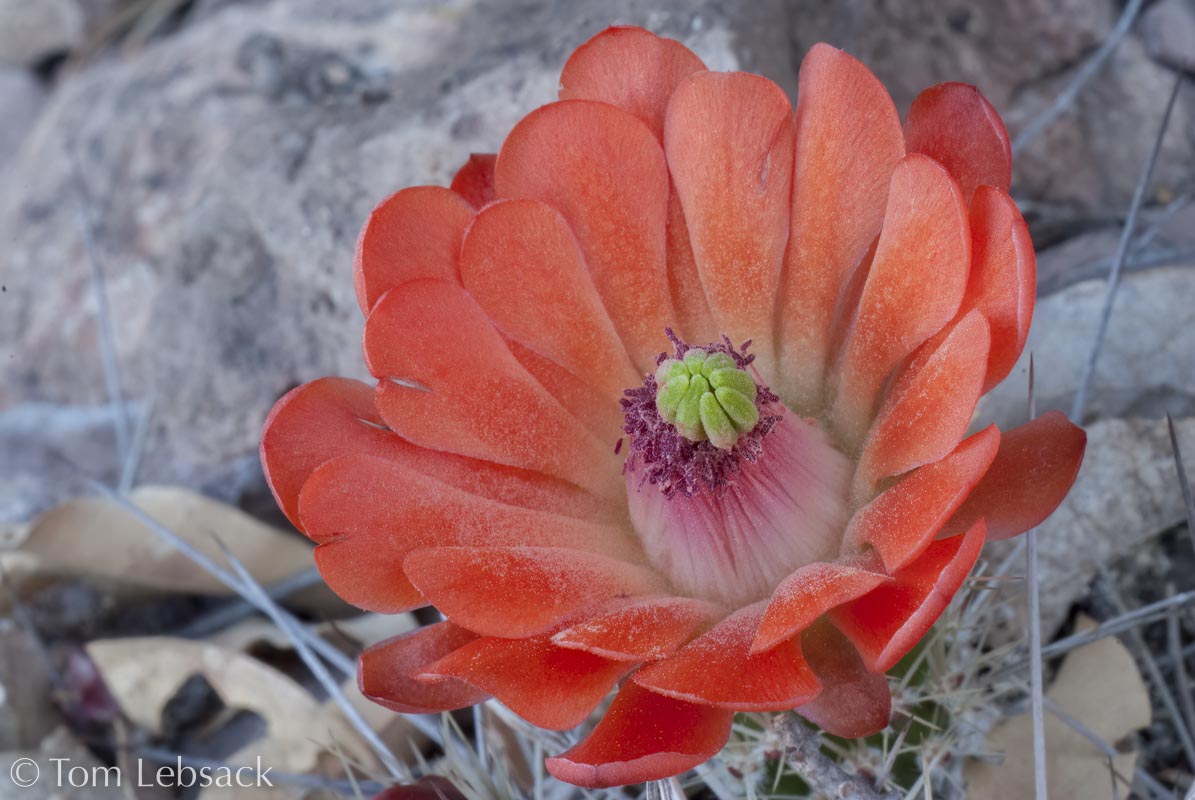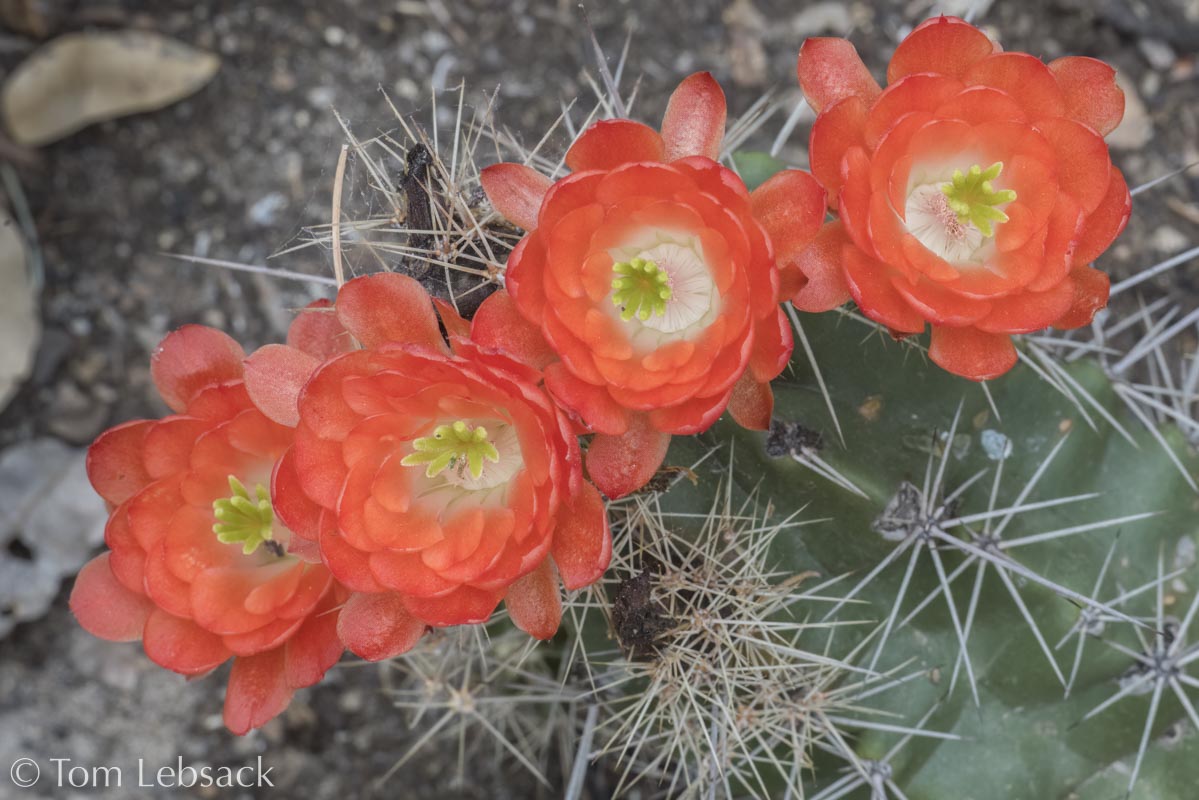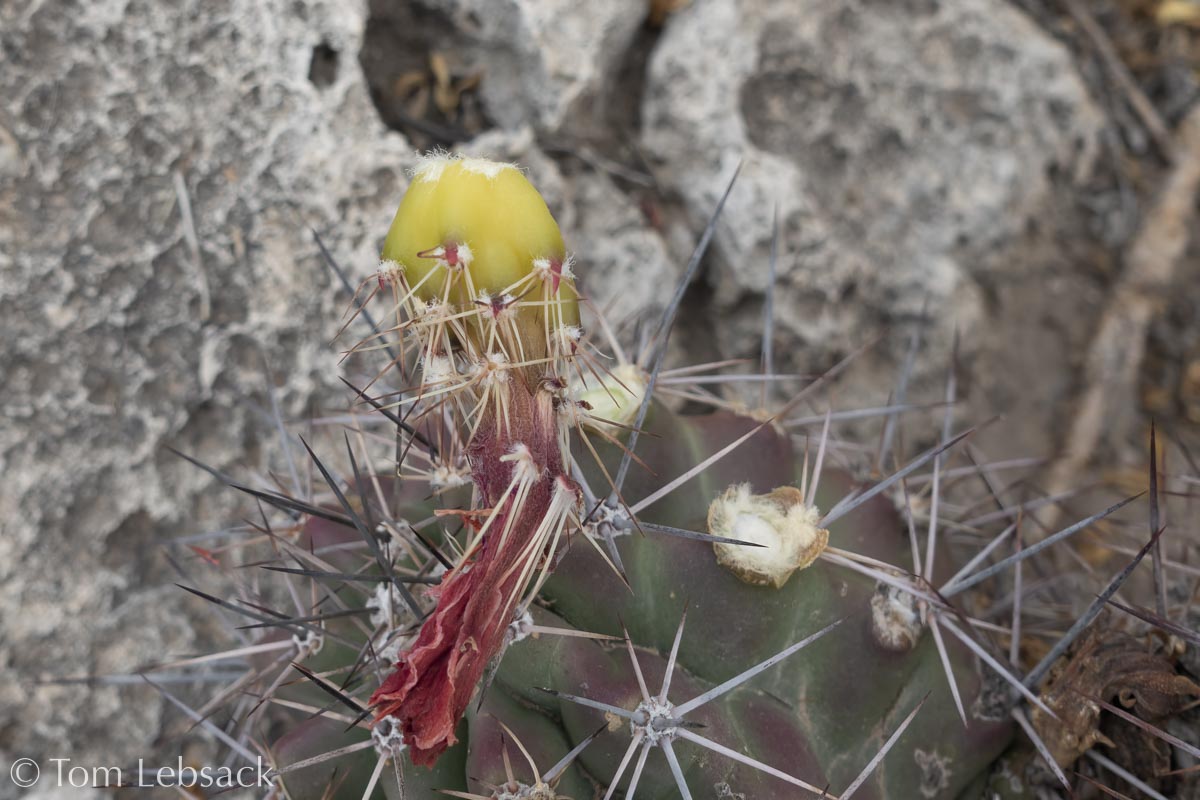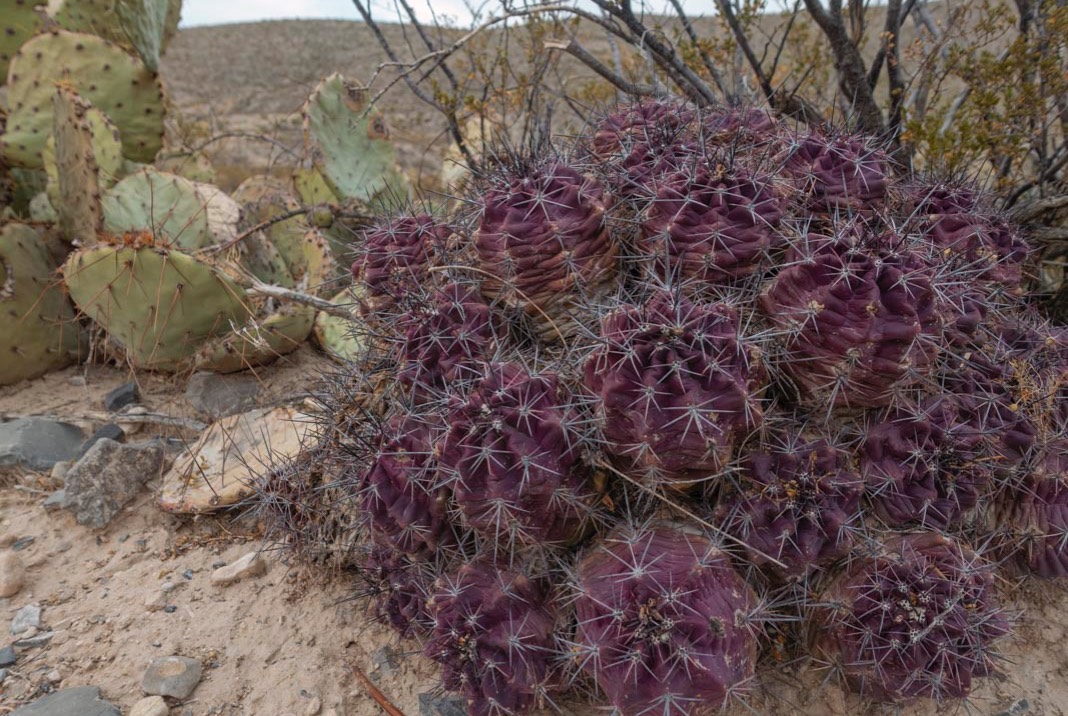Texas Wildbuds
Echinocereus coccineus ssp. transpecosensis
(Claret Cup Cactus)
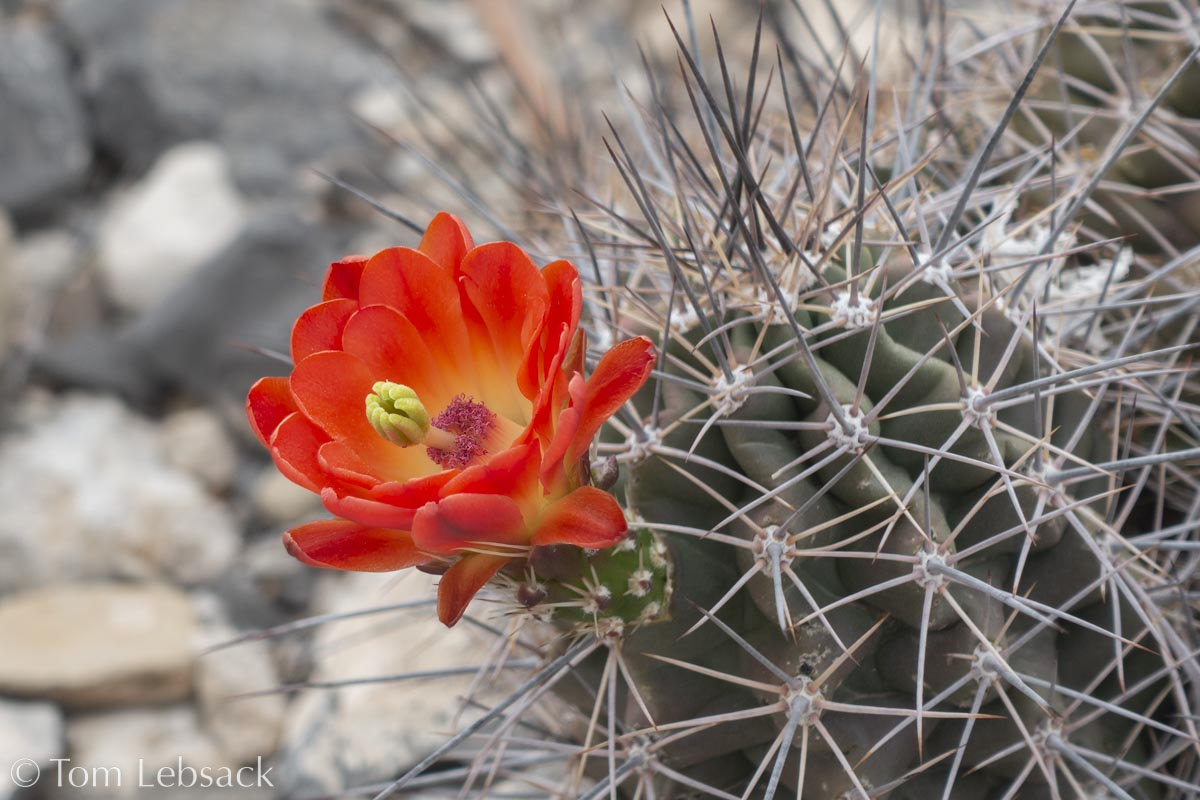
Echinocereus coccineus ssp. transpecosensis, Williams Ranch Road, Guadalupe Mountains National Park, Culberson Co. 06814
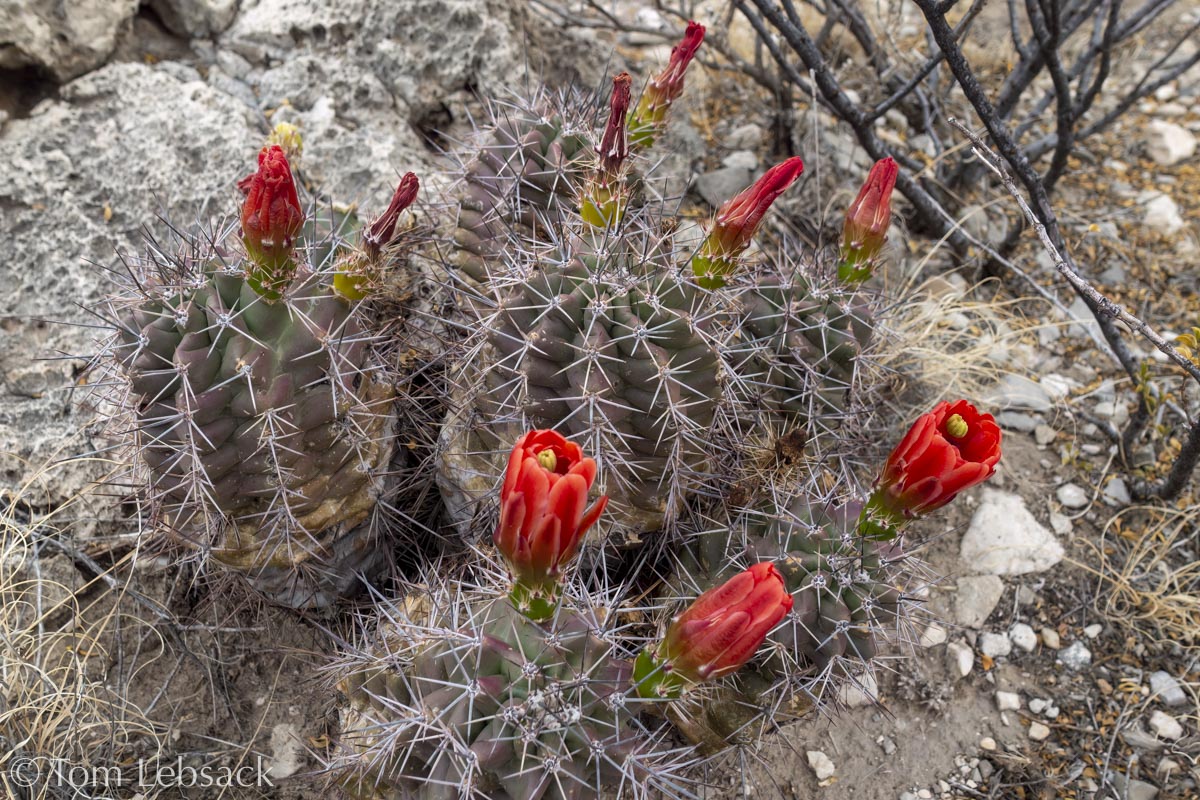
Echinocereus coccineus ssp. transpecosensis, Williams Ranch Road, Guadalupe Mountains National Park, Culberson Co. 06838
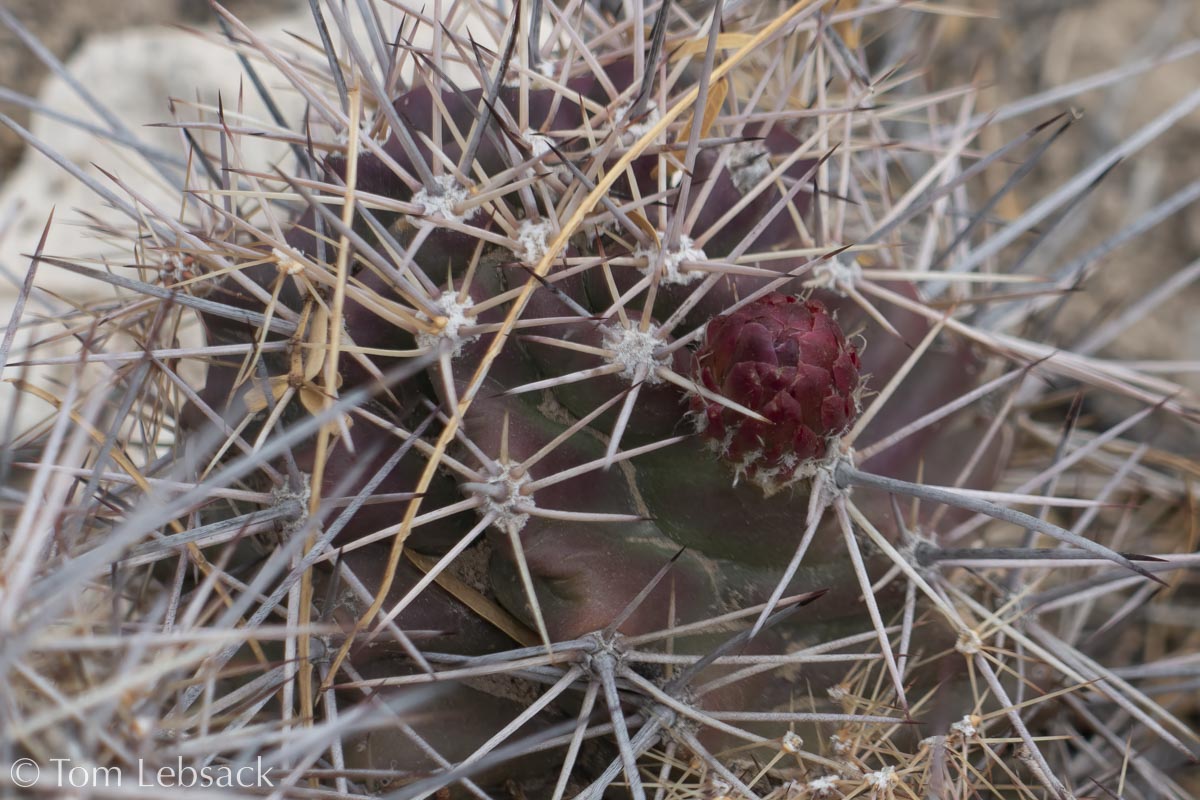
Echinocereus coccineus ssp. transpecosensis, Williams Ranch Road, Guadalupe Mountains National Park, Culberson Co. 06825
| Scientific Name | Echinocereus coccineus ssp. transpecosensis | USDA PLANTS Symbol | N/A |
| Common Name | Claret Cup Cactus, Scarlet Hedgehog Cactus | ITIS Taxonomic Serial No. | N/A |
| Family | Cactaceae (Cactus) | SEINet Reference |
Click Here |
| Description | Habitat: Dry, limestone soils in semi-desert shrublands, mountains and rocky areas; 2300 to 7800 ft. Plant: Mounds up to 30 inches across; a few to 20 or more stems. Pads & Spines: Cylindrical to ellipsoidal stems, 2 to 4 inches in diameter and 4 to 16 inches tall with 7 to 11 ribs; dark green to purple surface; round/oval areoles with 1 to 4 central spines 0.4 to 2.4 inches long and 6 to 11 radial spines 0.2 to 1.2 inches long; yellowish to brown becoming gray. Inflorescence: Funnel to cup-shaped flowers with rounded, rather stiff, bright crimson tepals with cream-colored bases, 1.6 to 3 inches across; male flowers with cream-colored filaments and pink-purple pollen-filled anthers; female flowers with short filaments and empty anther sacs below 6 to 14 light-green stigma lobes. Bloom Period: March and April. Fruit: Reddish-brown to pink, round to oval, 1 to 1.5 inches long and almost as wide. References: iNaturalist and A New Echinocereus Taxon with Red Flowers From the Trans Pecos Area of Texas by Blum and Oldach in "The Cactus Explorers". Note: This is a relatively new subspecies that was described in 2015 by Wolfgang Blum, Traute Oldach and Jörn Oldach in the reference above. |
BONAP Distribution Map N/A | Texas Status: Native |
Banner photo of Castilleja indivisa and Lupinus ssp. taken along FM 1323 north of Johnson City, Blanco County
© Tom Lebsack 2025
Every attempt is made to provide accurate, up-to-date, and relevant information, but the completeness or accuracy of any information presented on this website cannot be guaranteed. I use authoritative references to insure high standards of accuracy and review and update the information frequently.
